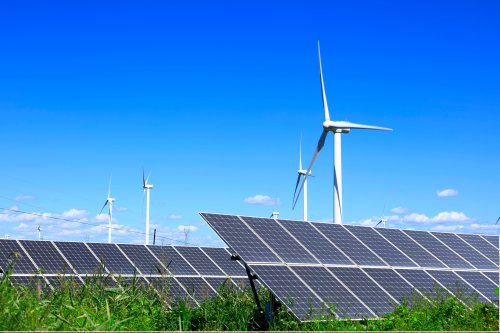Solar power will account for the largest share of renewable energy by 2030. Its capacity will double in five years.
These figures are provided by the International Energy Agency (IEA) in its annual report, which was analyzed by EcoPolitics. In it, experts published the latest forecasts for the development of renewable energy technologies and barriers until 2030.
According to the agency, the total capacity of renewable energy in the world will increase by 4,600 GW by 2030, which is equivalent to the total capacity of China, the European Union, and Japan. More than 80% of this growth will come from solar power (PV).
Why solar energy is actively progressing
Experts emphasized that the success of solar energy is due to low costs and rapid approval of energy projects. In particular, the use of solar energy will grow in developing countries such as Saudi Arabia, Pakistan, and several countries in Southeast Asia. Wind, hydro, bio, and geothermal energy will also increase their share of generation.
This year's forecast for renewable energy growth between 2025 and 2030 has been lowered by 5% compared to last year. This means that there will be 248 GW less new capacity.
Experts emphasized that the decline is due to changes in policy and market conditions, particularly in the US and China. In the US, growth is expected to slow by nearly 50% due to the elimination of tax breaks, new import restrictions, and a ban on new wind energy projects by the administration of US President Donald Trump.
Wind power generation
Agency representatives noted that wind energy faces supply chain problems, rising costs, and delays in permits for the construction of wind turbines. However, global capacity is projected to double to over 2,000 GW by 2030.
Major economies such as China and the European Union are working to resolve issues with wind energy use.
Hydropower
Experts emphasized that hydropower will continue to grow, with capacity expected to increase by more than 154 GW by 2030. Pumped storage hydropower will develop particularly rapidly, with a projected doubling to 16.5 GW by 2030.
This growth is driven by the need for flexibility and long-term energy storage. China leads the way with over 60% of total global growth in pumped storage energy over the forecast period.
The IEA recommends that countries strengthen political support for RES, invest in infrastructure, and promote the development of renewable energy technologies to ensure the sustainable growth of “clean” energy.
IEA forecasts for renewable energy in different regions of the world
India
India is expected to become the second-largest renewable energy growth market after China, with capacity set to increase 2.5 times in five years. According to the IEA, this growth is driven by an increase in auctions, new support for rooftop solar projects, and accelerated permitting for hydropower.
European Union
The growth forecast has been raised due to large-scale solar photovoltaic installations. It is also due to a surge in corporate power purchase agreements (PPAs) in Germany, Spain, Italy, and Poland.
Saudi Arabia
The growth forecast for the Middle East and North Africa has been raised by 25% due to the rapid growth of solar photovoltaics in Saudi Arabia.
We remind EcoPolitic readers that the International Energy Agency (IEA) has lowered its global renewable energy growth forecast for 2030 by 900 GW compared to last year's forecast.
Experts expect global renewable energy capacity to grow by 4,600 GW by 2030. This is less than the six-year forecast of 5,500 GW in 2024. In particular, solar energy will account for about 80% of the growth.





